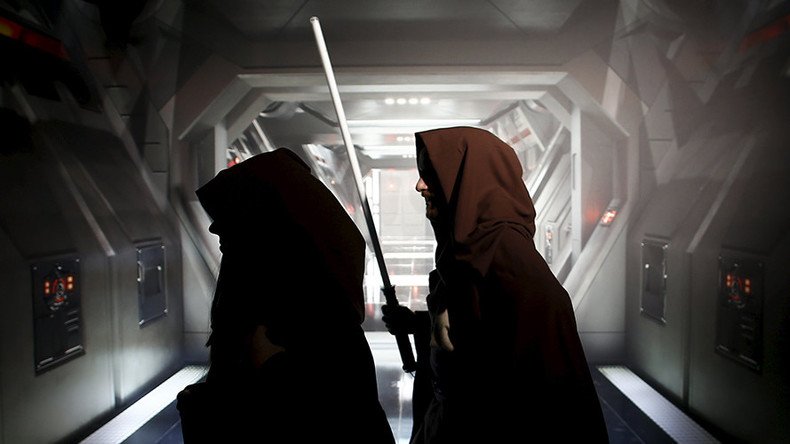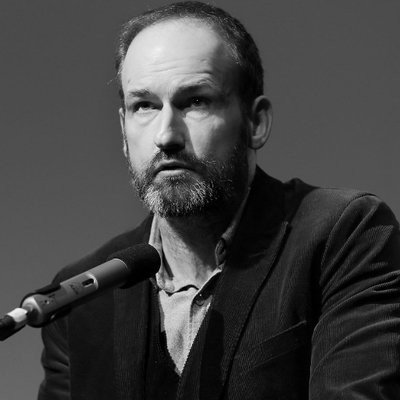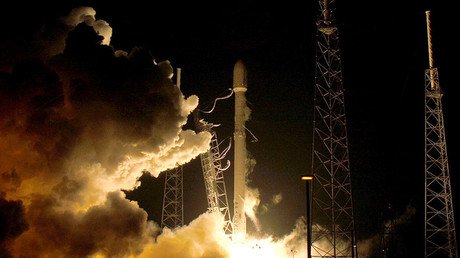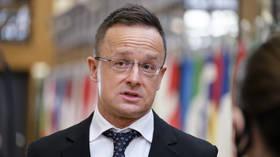New Star Wars film’s dark message: Super-rich versus everyone else

‘Star Wars’ is a simple story of good versus evil, light versus darkness, and freedom versus tyranny. In other words, it is the story of America’s struggle to preserve democracy and civilization in a world beset by evil and ‘evildoers’.
Movies and political propaganda have long walked hand in hand. Indeed if ever a medium was suited to propaganda it is the medium of cinema. And if ever an industry could be credited with creating an alternate reality so pervasive it has managed to convince generations of Americans and others around the world that up is down, black is white, and left is right, that industry is Hollywood.
George Lucas, the creator of a Star Wars franchise, which, including this latest installment, has churned out seven movies since the original appeared in 1977, is (together with Steven Spielberg) a child of the reaction to the American counter-culture of the sixties and early seventies.
Though both products of the sixties – a decade in which culture and the arts, particularly cinema, was at the forefront of resistance to the US military industrial complex – Lucas and Spielberg came to prominence in the mid-70s with movies which rather than attack of question the establishment, instead embraced its role as both protector of the American people and arbiter of the nation’s morals.
The curtain began to come down on the most culturally vital, exciting and cerebral period of American cinema – responsible for producing such classics as ‘Bonnie and Clyde’, ‘MASH’, ‘The Last Detail’, ‘The French Connection’, ‘The Wild Bunch’, ‘Taxi Driver’, ‘Apocalypse Now’ – with Spielberg’s ‘Jaws’ in 1975, followed in 1977 by Lucas’s ‘Star Wars’. The former frightened America, while the latter made it feel good about itself again.
Both movies together spawned the high concept blockbuster, wherein audiences were invited to feel rather than to think, allowing them to suspend disbelief and escape reality instead of sharing the experience of confronting it via stories in which alienated characters expressed the angst, frustration, anger, and disaffection that they themselves were experiencing in their own lives, thus inducing a sense of solidarity.
It was the era of the anti-hero, main characters for whom the system and conformity was the enemy, and who ploughed their own furrow regardless of the consequences. The questioning of authority and its received truths reflected a country whose young and not so young were hungry for radical change. The war in Vietnam, Watergate, the black civil rights and nationalist movements had shaken up American society and, with it, its culture and cultural references.
But by the mid-70s, with the end of the Vietnam War, and with the counter culture running out of steam, the time had arrived to box up all that alienation, anger and rebelliousness and allow the mythology of the ‘American Dream’ and democracy to reassert its dominance.
In his peerless history of this vital period of American cinema – ‘Easy Riders, Raging Bulls’ – author and cultural critic Peter Biskind writes: “Beyond its impact on movie marketing and merchandising, Star Wars had a profound effect on the culture. It benefited from the retrenchment of the Carter [President Jimmy Carter] years, the march to the center that followed the end of the Vietnam War.”
This march to the center became a march to the right under Reagan, which manifested in Hollywood as artistic and cultural stagnation, wherein directors such as Spielberg and Lucas became less concerned with story and character and more focused on spectacle. Bigger, louder and richer was the mantra as two dimensional characters and plot lines that your average child with a set of crayons and an imagination could come up with predominated.
Biskind writes: “Lucas knew that genres and cinematic conventions depend on consensus, the web of shared assumptions that had been sundered in the ‘60s. He was recreating and reaffirming these values, and Star Wars, with its Manichean moral fundamentalism, its white hats and black hats, restored the luster to threadbare values like heroism and individualism.”
In this latest Star Wars movie, directed by J J Abrams, Lucas makes do with a writing credit after selling the franchise to Disney in 2012 for $4.05 billion. Yes, you read that right; he sold it for $4.05 billion. That kind of money will buy you a lot of light sabers.
Disney and Abrams have reached back in time in order to refresh the franchise, returning it to its roots with the return of Han Solo (Harrison Ford), Princess Leia (Carrie Fisher), Luke Skywalker (Mark Hamill), and old iconic favorites Chewbacca and R2D2. For Star Wars buffs there’s even the return of Han Solo’s iconic spaceship the Millennium Falcon. The movie’s antagonist, Darth Vader, is named Kylo Ren, played by Vladimir Putin… sorry, Adam Driver. With this character lies the one interesting twist in the plot. Mind you, having said that, we’re talking ‘interesting’ relative to the rest of the plot. We’re not talking Roman Polanski and ‘Chinatown’ here.
There are also major roles in the movie for two relative unknowns, both British: Rey, through whose eyes the narrative unfolds, is played by Daisy Ridley, while Finn is played by John Boyega.
For all the hype surrounding its release, and the rave reviews it has garnered, the latest installment of the long running and inordinately successful Star Wars franchise – ‘Star Wars: The Force Awakens’ – is so embarrassingly and toe-curlingly clichéd it’s impossible to walk out afterwards without limping.
Perhaps the most striking aspect of the movie is not the battle of good versus evil it portrays, but the fact that Harrison Ford was reportedly paid 76 times more than newcomer Daisy Ridley to star in it. The 73 year old’s financial package comprised an upfront fee in the region of $20 million plus 0.5 percent of the movie’s gross earnings, which are projected to reach a whopping $1.9 billion.
It is proof that the story of America is not good versus evil, or light versus darkness at all. It is instead the story of the super-rich versus everybody else.
The statements, views and opinions expressed in this column are solely those of the author and do not necessarily represent those of RT.















